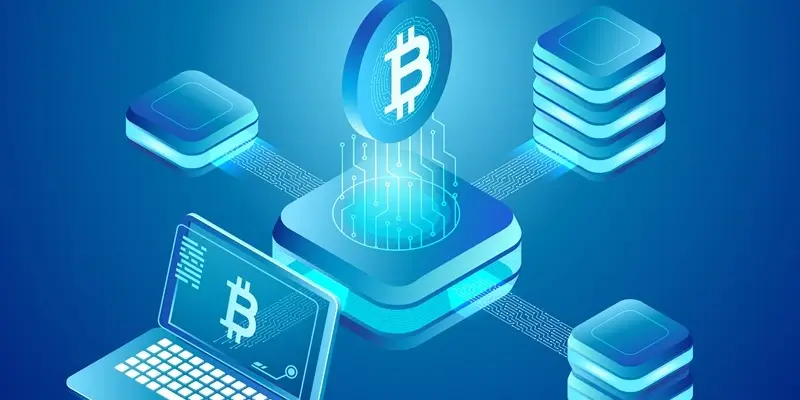In an era where financial technology is continually evolving, the demand for robust, scalable, and cost-effective transaction systems has never been higher. Among the various blockchain solutions that have emerged over the years, the XRP Ledger (XRPL) stands out for its performance and potential. With its decentralized nature, ultra-low transaction fees, and versatile functionality, XRPL has gained significant traction among developers, businesses, and financial institutions.XRPL’s comprehensive suite of features and proven track record make it a compelling option for those seeking reliable and innovative blockchain solutions. As the industry looks for sustainable and efficient methods to handle the increasing volume of digital transactions, XRPL’s attributes make it a noteworthy candidate for the future of blockchain technology.
Decentralization and Accessibility
The intrinsic value of XRPL lies in its decentralized architecture, designed to eliminate single points of failure and ensure continuous operation.As an open-source blockchain, XRPL operates through a global network of validators, developers, and users. These stakeholders collaborate to maintain the network’s integrity and security, fostering a transparent system that benefits all participants.Additionally, the unfettered access to XRPL’s extensive range of tools, documentation, and resources empowers developers to rapidly create and deploy innovative projects. This decentralized foundation not only heightens security and transparency but also eliminates barriers to entry, making XRPL a go-to platform for both novice and seasoned developers.XRPL’s decentralized structure ensures that no central authority controls the network, which significantly reduces the risk of systemic failure and censorship. This aspect is particularly appealing for businesses and individuals focused on privacy and security. Blockchain enthusiasts appreciate XRPL’s commitment to maintaining a decentralized network, which stands in stark contrast to more centralized alternatives.As a result, XRPL garners trust within the broader blockchain community, solidifying its reputation as a reliable and transparent platform. The open-source nature also encourages continuous improvement and innovation from a wide array of contributors, accelerating technological advancements and adaptation.
Affordability and Financial Inclusion
Financial inclusion is a critical factor when considering blockchain solutions, and XRPL excels in this domain by offering ultra-low transaction fees. Transactions on the XRPL cost a fraction of a penny, making it an affordable option for transferring value across borders or conducting microtransactions. This cost efficiency promotes broader adoption, particularly in regions where traditional banking services are either expensive or inaccessible. The financial barriers are significantly lowered, enabling a wider audience to leverage blockchain technology for various applications, from remittances to everyday transactions.The affordability of XRPL presents a stark contrast to traditional financial systems, where fees and intermediaries often inflate costs. This economical approach makes XRPL an attractive solution for startups and enterprises alike, seeking to integrate blockchain technology without incurring high expenses.The low transaction fees also contribute to the sustainability of the network by allowing a higher volume of transactions without compromising on cost. This aspect is crucial for scaling financial applications and ensuring long-term viability, particularly in a global context where transaction volumes can be immense.
Community and Continuous Development
The global community that sustains XRPL plays an instrumental role in its ongoing development and success. Developers, businesses, and validators collaboratively enhance the network, ensuring it remains at the forefront of technological advancements. This dynamic environment fosters rapid innovation and adaptation, addressing emerging needs and challenges within the financial sector.The active engagement of a diverse group of stakeholders ensures that XRPL continuously evolves, maintaining its relevance and capability in a fast-paced industry.
The commitment of the XRPL community extends to regular updates and improvements, addressing security vulnerabilities and enhancing performance. This proactive approach ensures that XRPL remains a robust and secure platform, capable of supporting high-value and sensitive transactions.The collaborative ethos of the community also encourages the sharing of knowledge and resources, empowering new developers and businesses to leverage XRPL effectively. This culture of continuous development positions XRPL as a forward-thinking and adaptive solution, ready to meet the demands of a rapidly changing financial landscape.
Reliability and Versatility
With over a decade of uninterrupted service and more than 63 million transactions processed, XRPL’s track record speaks volumes about its reliability. This proven stability makes it a trusted infrastructure for developers and businesses seeking dependable blockchain solutions for financial applications.XRPL’s architecture supports a versatile range of financial applications, from high-performance decentralized exchanges (DEX) to seamless cross-currency and international payments. The built-in DEX facilitates direct asset trading on the blockchain, eliminating intermediaries and reducing costs, while the pathfinding algorithm optimizes liquidity for efficient cross-border transactions.Moreover, XRPL’s versatility extends to its support for the issuance of other digital assets, besides its native token, XRP. Businesses can create and manage their own tokens securely on the XRPL, opening up new avenues for innovation and financial solutions.XRPL’s payment channels further enhance its utility, enabling high-speed, low-cost microtransactions suitable for applications requiring numerous small transactions. These features collectively position XRPL as a multifaceted platform that can cater to diverse financial needs, from enterprise solutions to individual use cases.
Enhanced Security and Transaction Management
Security is paramount in any financial system, and XRPL addresses this concern with robust measures, including multi-signature features that require multiple approvals for transaction execution. This additional layer of security is crucial for high-value or sensitive operations, providing users with greater control and peace of mind. The multi-signature functionality enables businesses to implement more sophisticated governance structures, safeguarding assets and preventing unauthorized transactions.This focus on security ensures that XRPL can handle complex financial operations without compromising on safety.
The ledger’s architecture is designed to resist attempts at fraud or malicious activity, further enhancing its appeal as a secure platform for financial transactions.By leveraging a consensus algorithm that validates transactions in real-time, XRPL achieves both speed and security. This dual focus makes it a robust solution for businesses and individuals seeking a reliable blockchain platform for various applications.The emphasis on security, coupled with other advanced features, underscores XRPL’s suitability for mission-critical financial operations and its potential to revolutionize the way digital transactions are managed.

